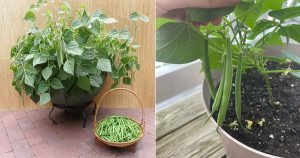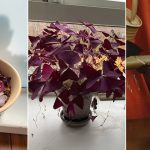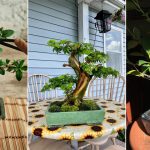I don’t know if you’ve noticed a pattern lately, but on Thursday mornings I have my Master Gardener training class, and I learn such great things that I can’t wait to share them with you all on Friday. Yesterday’s class was about soil, amendments, and fertilizers. The professor teaching the class discussed, among other things, three common signs that there is something off-balance in the potting soil the plant is growing in. The three leaves depicted above show chlorosis, leaf tip burn, and pallor.
Chlorosis
You know your plant is suffering from chlorosis when the leaves turn yellow but the veins are still green. It is a serious problem, because it means the plant isn’t producing enough chlorophyll. Without chlorophyll the plant can’t produce food and will eventually die.
Chlorosis can be caused by a number of things:
- An iron deficiency in the soil
- Soil that’s pH is so alkaline it is interfering with the roots’ ability to absorb iron
- Poor drainage
- Damaged roots
Unless you have been adding lime to your potting soil for some reason (like to change a hydrangea’s flower color), you can probably easily rule out soil pH. And unless you’ve recently ripped off all the plant’s roots, you can probably cross that possibility off the list too.
Poor drainage is easy to diagnose and the most common cause of chlorosis in potted plants. If the soil looks more like sludge than earth, you have a drainage problem or you’re watering too frequently. Let the soil dry out between waterings, or add another drainage hole.
If you’ve ruled out all the other possibilities, then the soil is probably iron deficient. Pick up some chelated iron at your garden center and follow the instructions on the packaging.
Leaf Tip Burn
Especially common in indoor plants, but also occurs on plants growing outdoors is leaf tip burn. It’s when the very tip of the plant starts to die back, or when the edges all the way around the leaves look as if they have been “burned.”
The most common culprit is salt. Salts are used in fertilizers, so if you’re fertilizing too frequently or applying too much at once, salt will build up in the potting soil and show up as burned leaves. You’ll often see white deposits on the soil if you have had a heavy hand with the fertilizer. To remedy the situation, flush the salts out of your potting soil by watering the pot deeply until water flows quickly out of the pot. Allow the soil to dry out and repeat if necessary.
Many cities (and some homeowners) have water softening programs that use salt to soften hard water. Some areas also have naturally high amounts of salt in their water. This salty water is then used on your plants, and voila, too much salt in the soil. If this is the case, by cheap bottled water in a gallon jug and use it to water your plants.
Another thing that I have seen sometimes cause leaves to burn is close proximity to an airconditioning vent. Especially in the winter when the heater is turned on, the constantly blowing air dries out the leaves. The next time you go out to eat, check out their plants near the air vents. I see this problem in restaurants a lot.
Pallor
Pallor is when leaves lose their color. The difference between pallor and chlorosis is that when a plant is suffering from chlorosis, the veins remain green, with pallor the entire leaf loses it’s green coloring. However, it is equally as problematic as chlorosis, because as was mentioned before, no chlorophyl means no food for the plant.
Assuming that it is not Autumn, and/or your plant is not supposed to drop all of it’s leaves, completely yellow or pale colored leaves means one of two things: the plant is not getting enough light, or it is not getting a nutrient it needs.
- If all of the leaves are universally pale or yellow (or all of them on one side of the plant), the plant is not getting enough light.
- If the oldest leaves have become yellow, and it appears that the pallor is moving up the plant, the soil is nitrogen deficient. Look for a fertilizer where the first number is larger than the others.
- If the youngest leaves are yellow, then the soil is most likely deficient in sulphur, although I have never seen this or heard of it in the context of potted plants.




